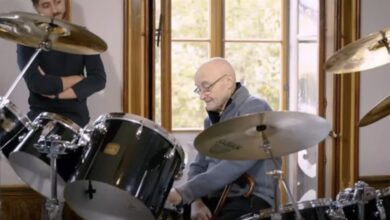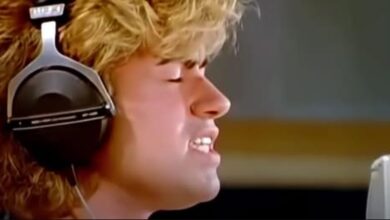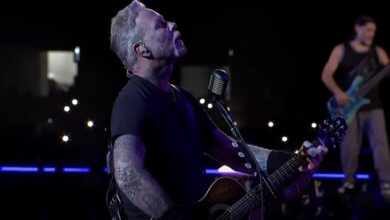If You’re A Purple Fan, Or Not, This Is Still One Of The All-time Most Rockin’ Cuts Ever
Deep Purple’s live performance of “Lazy” in Scandinavia in 1972 is a brilliant display of the band’s musical prowess and stage presence. This track, originally from their album “Machine Head,” stands out for its improvisational nature and the skillful interplay between the band members. The performance begins with Jon Lord’s overdriven Hammond organ intro, setting a bluesy, improvisational tone that captivates the audience from the start. As the song progresses, the musicians build up to the main riff, showcasing their ability to communicate and interact seamlessly on stage.
In these first four minutes, the interplay between Jon Lord and Ritchie Blackmore is particularly noteworthy. Lord’s organ solos weave complex melodic lines, while Blackmore’s guitar riffs add layers of intensity and excitement. This musical conversation between the organ and guitar is a testament to the band’s tight coordination and mutual understanding. The anticipation builds as they gradually introduce the main riff, leading to a powerful and cohesive musical explosion.
Ian Gillan’s entrance with his dynamic vocals and harmonica playing further enhances the performance. His vocal delivery is both commanding and expressive, perfectly complementing the instrumental sections. The harmonica, used both in the studio and live versions, adds a unique texture to the song, blending seamlessly with the organ and guitar.
Roger Glover’s bass lines and Ian Paice’s drumming provide a solid foundation throughout the performance. Glover’s bass work is both rhythmic and melodic, supporting the harmonic structure while adding depth to the overall sound. Paice’s drumming is precise and energetic, driving the song forward and maintaining its momentum. Their contributions are crucial in maintaining the song’s dynamic range and ensuring the seamless transitions between different sections.
“Lazy” is one of Deep Purple’s longest tracks, with live versions often extending well beyond ten minutes. This length allows for extensive solos and improvisation, giving each band member the opportunity to showcase their individual talents. The performance in Scandinavia exemplifies this, with each musician delivering standout moments that highlight their technical skills and creativity.
The song itself was co-written by all five members of Deep Purple’s Mark II lineup: Blackmore, Gillan, Glover, Lord, and Paice. This collaborative approach is evident in the seamless integration of their parts and the cohesive sound they produce together. “Lazy” is not just a showcase of individual prowess but a testament to the band’s ability to create a unified and powerful musical experience.
Deep Purple, formed in 1968, quickly rose to prominence with their blend of hard rock and heavy metal. The Mark II lineup, active during the recording of “Machine Head” and the live performances captured on “Made in Japan,” is often regarded as the band’s most iconic. Their influence on the rock genre is profound, with their innovative sound and electrifying live shows inspiring countless musicians and bands.
In conclusion, the live performance of “Lazy” in Scandinavia in 1972 captures Deep Purple at their best. The intricate interplay between the band members, the build-up to the main riff, and the extended improvisational sections all contribute to a performance that is both technically impressive and deeply engaging. This performance remains a highlight in Deep Purple’s extensive live repertoire, showcasing the band’s exceptional musicianship and enduring appeal.





